A Handy Accessory to Select Cabinet Impedance on the Go
04/23/2025
I have a great old 2x12" guitar cabinet that is populated with a pair of eight-ohm Fender pulls from the 1960s that has served me well for decades. You can find out more about the cab, HERE. Its one limitation is, like most cabs, that it offers only one impedance option. Over the years I've ended up in the position of owning American, Canadian, and British amps, with the Brit amps loving sixteen-ohm loads and the American and Canadian amps preferring eight. Unfortunately, a 2x12" loaded with two eight ohm speakers typically offers only two options: sixteen or four ohms, and only one of those options per wiring job. That is, until the product that is the subject of this review showed up.
We are talking about the Plug and Play, a connection and impedance-selection solution for guitar speaker cabinets.
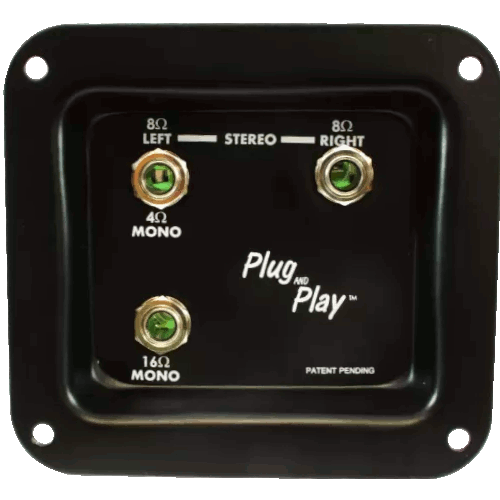
After this product was brought to my attention, I ordered one to help me match my cab to my various amps. The price was $20.95 from Amplified Parts, plus shipping, so it came out to about thirty bucks. The package was shipped out and arrived promptly. On first examination, the unit is well-built and logically laid out. The actual plate is thick and rigid enough that it feels like it can withstand the rigors of the road. There is a central recessed area where the jacks reside and a mounting flange around the outside. The unit offers eighteen-inch, color-coded leads with female, insulated push-on lug connectors for the speakers. I figured the leads are easily long enough for my application. There are three jacks on the jack plate that offer four options with two eight-ohm speakers and all the routing work is done by the switched jacks and the heavy circuit board traces: Using the top-left jack alone, you get both speakers in parallel for four ohms. Using the bottom-left jack alone you get both speakers in series for sixteen ohms. Plugging into one of the top jacks and putting a empty plug in the other top jack jack, you get a single speaker at eight ohms. Plugging two amps into the two top jacks, each gets its own speaker at eight ohms. There are wiring examples for four-speaker cabinets and comprehensive documents in .PDF files on the product's webpage.
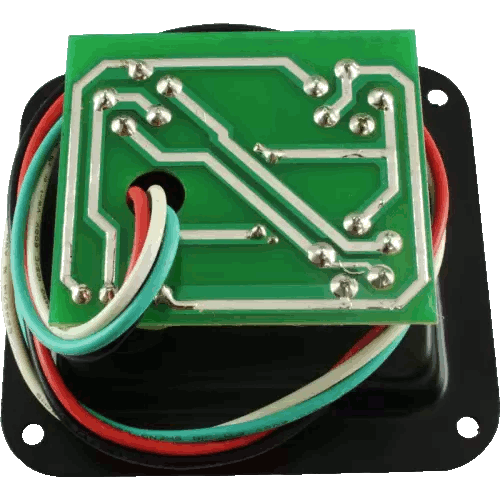
It's been spring planting season so helping my wife with her gardens has taken a couple of weekends since the unit arrived. To be honest, I was also dreading disassembling the wall of amps in my practice room to get to the cab (thing wanted always buried) because it would involve a lot of heavy lifitng, but I finally got around to the project last Saturday. In reality, the actual installation was a pretty easy job compared to all the amp moving. After retrieving the cabinet from the pile and opening the back, I pulled out my father's heavy duty Weller soldering gun from the '60s to remove the old soldered-in leads and clean up the speakers' male push-on lugs to accept the unit's female lugs.
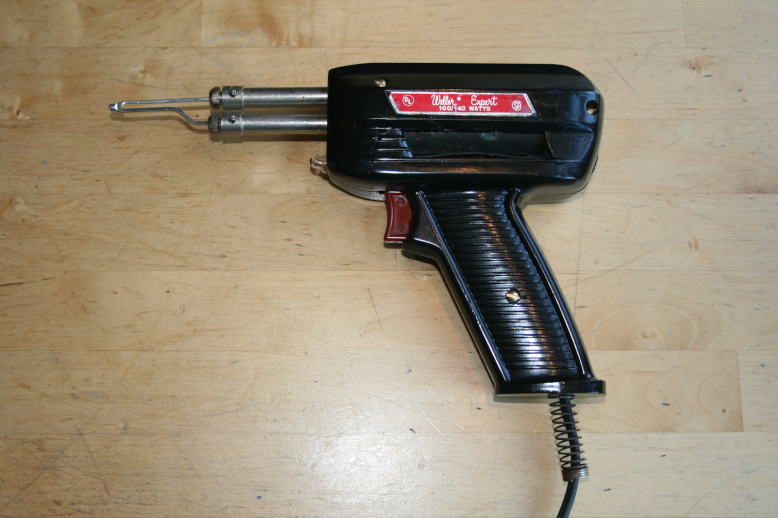
Image courtesy Antique Radios
I couldn't find my soldering braid so I messed around and got the lugs cleaned up with just the gun and a piece of wet sponge. Of course, I discovered the reel of braid when I put the gun back in the tool box. Duh. That would have made things easier.
While my original jack was installed on a corner of the back panel, I decided to sink this jack plate in the center-top to make the 18" leads reach the two speakers. I used a cordless drill to back out the screws on the cab back panel and then clipped the old leads. Based on the .PDF from the website, I laid out my location and marked the outline of the center recessed cup with a white wax pencil. Then I drilled four pilot holes within the outline to make starting the sawing easier. Once I had my starter holes drilled, I traced my outline with a jigsaw. The flange of the plate is wide enough to cover all reasonable sins and tearout from the cutout job. I was conservative with my cutout dimensions and so, had to go back and relieved it just a pinch to fit. Once I had it right, I found four wood screws in my bins and secured the plate. Before I plugged things up, I double-checked the polarity of the speakers with a nine-volt battery to make sure we'd be in phase. With that verified, I connected up the leads to my two eight-ohm speakers and checked things out with my little Marshall Origin 20 amp that wants sixteen ohms. Success! We be jahmmin'.
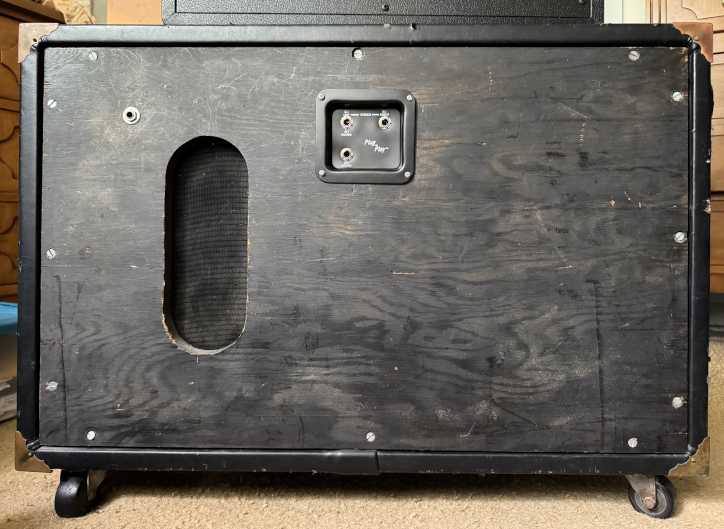
While buttoning up the cab I discovered a couple of stripped screw holes in the back panel's mounting cleats and repaired them with the old matchstick and carpenter's wood glue trick. So, a couple of hours after starting the job I had a good looking, flexible cabinet jack plate that would serve my American, Canadian, and British amps. Voile'!
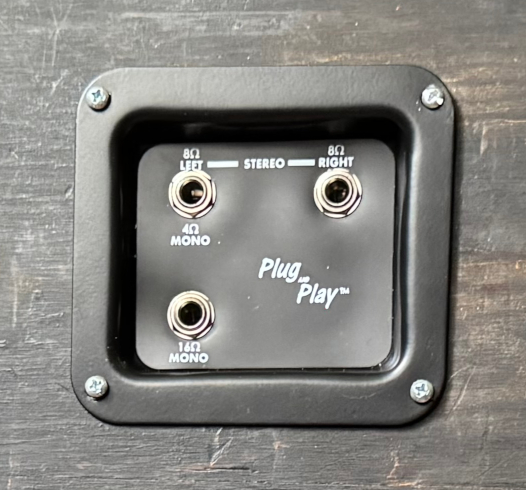
My example, home and dry
PLUGNPLAY at Amplified Parts
= =
=





